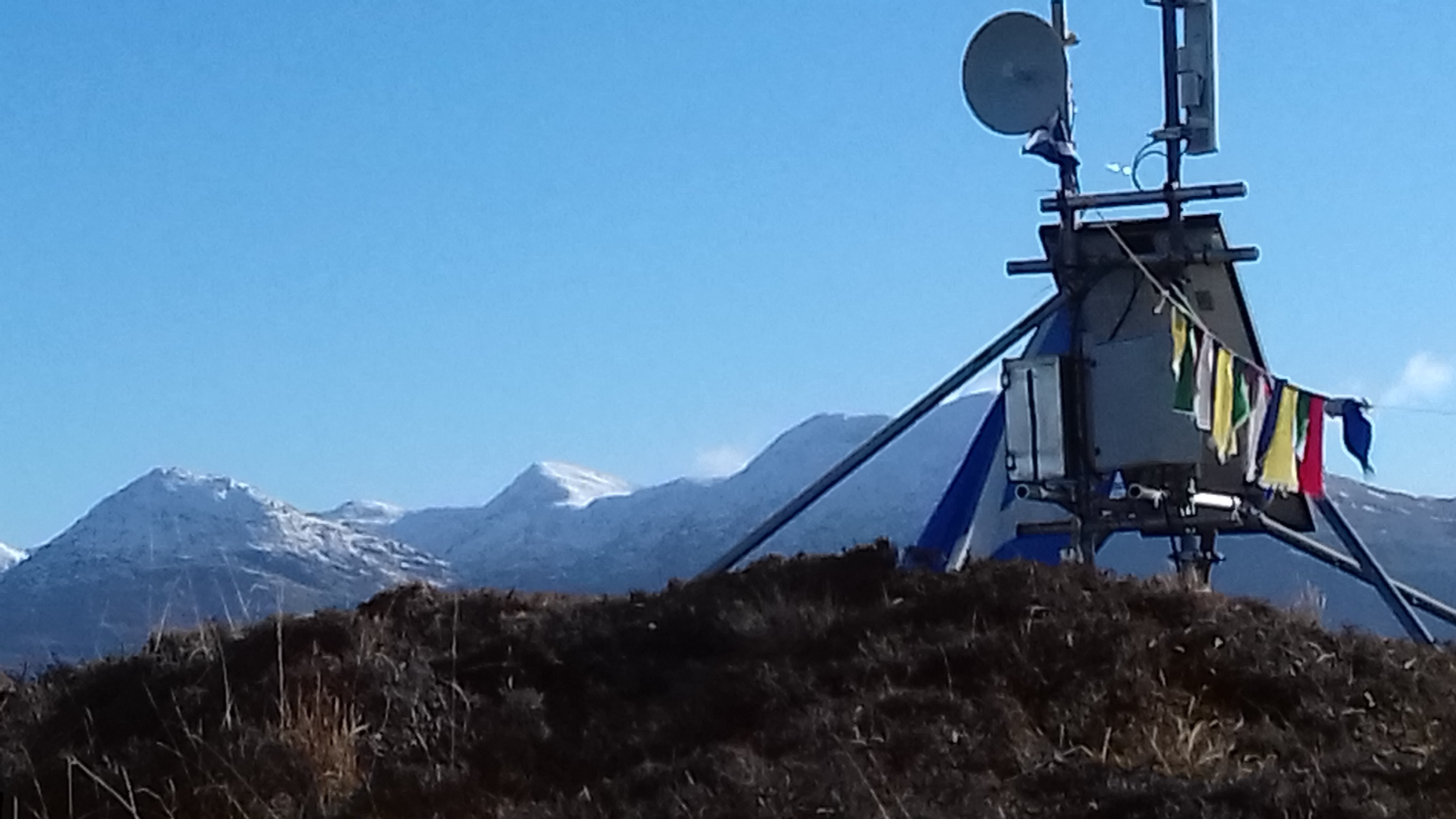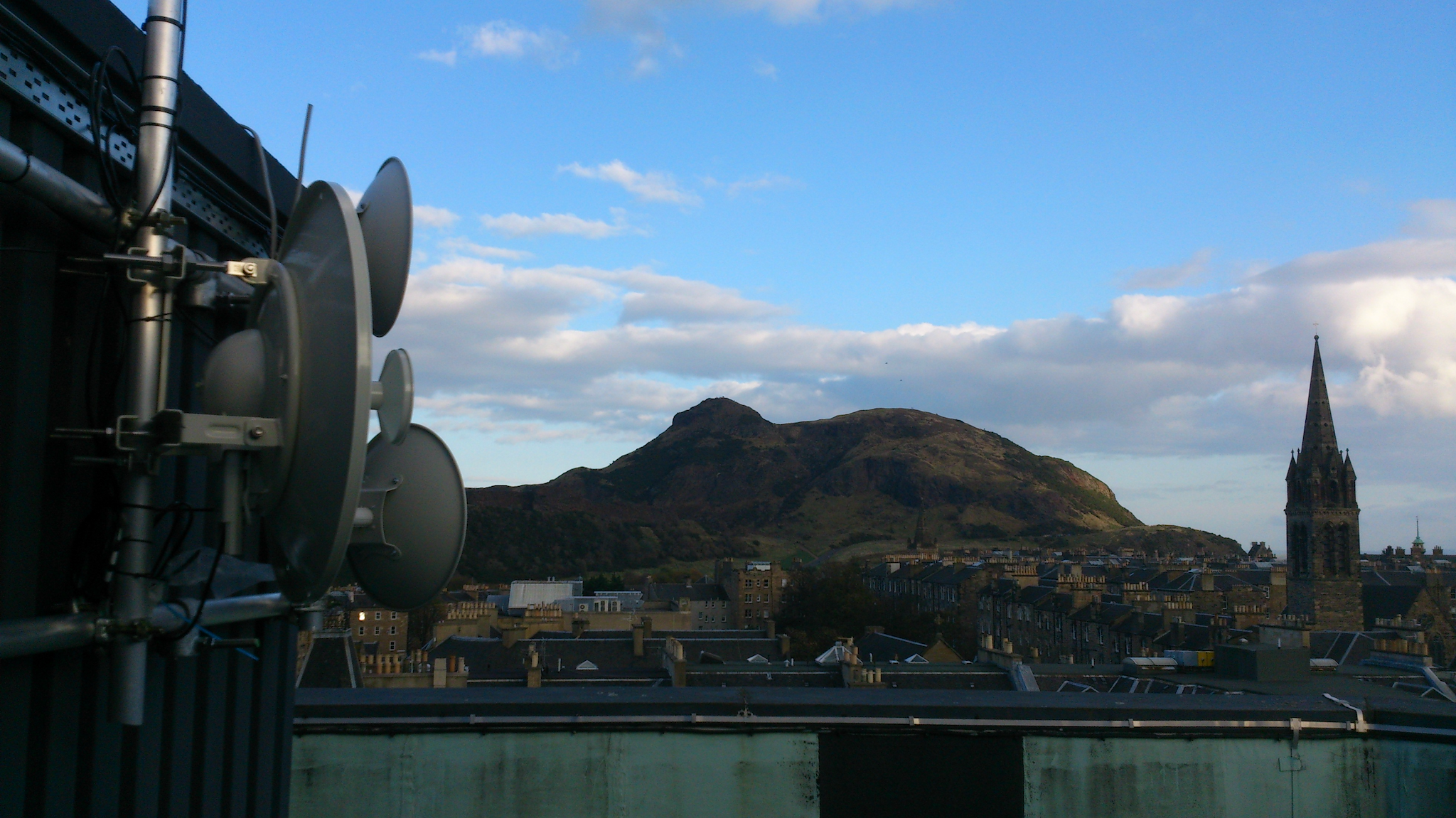Summerhall's role in the Scottish Internet
16 May 2024
In the spring of 2010 I gave a talk at the School of Informatics, down the street from Summerhall on the University of Edinburgh's George Square campus about some work that I had been doing on library databases. This as a time when the British Library was figuring out how to put its catalogue on the web so that its vast amount of data about books and authors could be used by others for whatever they wanted to do. P————, a professor there who put together the Database Group was impressed enough that he offered to make me a visitor and give me an office. This was a very welcome offer for a single parent freelance computer programmer with a then small child.
P———— and I became friends but it was more than a year before we discovered an interesting coincidence. Before working as a freelance programmer travelling around Europe, I had been a network engineer, building Internet service provider networks through the first years of the commercial Internet and occasionally in an ad-hoc way since then. P————, meanwhile, had been building a sizeable wireless network around his home in Arnisdale, Wester Ross. Others in Knoydart and the Small Isles as well as East Lothian had picked up on this idea and done similarly. People elsewhere in the Highlands and the Borders were starting to see these community broadband providers, after abortive attempts at using satellites and with BT nowhere to be seen, as the only seemingly viable way of getting Internet access. The difficulty was in how to do this at scale. Maybe I could help.
It is fairly straightforward to make a wireless Internet service provider network. The basics can be learned quickly enough by anyone used to constructing things or repairing machines. It is similar to carpentry or knitting in that way. The method is to find a high up place that can be seen from as many places that need service as possible. Radio waves in the part of the spectrum that we use for this like to travel in straight lines and do not like to go through objects. Having found a suitable spot, construct a framework of scaffolding and mount a radio on it. This radio has an of antenna with a wide beam pattern to cover as much of the service area as possible. At people's homes, they mount a smaller radio somewhere and point it at the mast up the hill.

Up the hill because, in the Highlands, the best place to build a mast is usually on the side of a hill. The image shows a typical Highland mast, this one on Doire Fhada, near Arisaig. We are looking South towards Rois Bheinn. The rectangular antenna is pointing towards Roshven and Glenuig, and the round dish back towards Arisaig behind us. Someone has decorated the mast with Tibetan prayer flags so that it can more easily be seen with binoculars from the village. The farmer on whose land this is later asked for the flags to be removed in case stags get tangled up in the string.
The round dish is not for connecting people up directly but rather for making longer distance links that are shared between everyone on the network. The game is to find somewhere where good Internet service can be got (preferrably the "bulk" or "wholesale" kind, not what individuals usually have) and to make one or more of these long distance links to get there. How to do this is not only a technical thing, it is also about finding places with line of sight to each other, imagine signal fires on tops of mountains, and getting permission to build masts in these places.
One village that had given up on government and industry to bring the Internet to them around that time (2012 or maybe 2013) was Heriot. They would have do it themselves. They had protested against wind farms and succeeded in getting money from the wind farm operators to spend for the good of the local community. This was a strange time in Edinburgh, I remember being flabberghasted at the anti-renewable energy protests that used to march down the Royal Mile. Whether the people of Heriot were actually against wind farms as such or whether they just saw it as unfair for such infrastructure projects to happen without any direct benefit to the community in which they were done, I do not know. One way or another, they had a small amount of money to spend on equipment and wanted help to bring the Internet to their village.

It turns out that there are two buildings in South Edinburgh where you can see way down into the Borders from their rooftops: Appleton Tower, which belongs to the University of Edinburgh, and the TechCube at Summerhall which was only partly rennovated at the time. I suppose it is still only partly rennovated as anyone who has been to the 6th floor can attest.
There were other reasons that Summerhall was an ideal base. One of the people involved with the Factotum real estate company and the early arrangements for Summerhall was C————. C———— was not an estate agent but rather an engineer who had started a commercial Internet service provider called Fluency which was small and approachable, ran its own network with some of its own fibre, and, most importantly, some of that fibre went to Summerhall. C———— was also a director of the Summerhall management company so was able to give us permission to use the roof.
We set about building a couple of frames and attaching them to the little building on the roof where the lift machinery is and where the header tanks for the water are. There is a funny story about those. We had a little cabinet with equipment inside, and the radios and antennas were outside. We needed to be able to run some cables between them. There was a pipe leading through the wall from one of the header tanks. I asked C———— if these were in use and he assured me that they were not and it would be fine to repurpose one of them for cabling rather than make a new hole in the wall. Well. A phone call arrived a couple of days later from a slightly panicked C———— as the header tank was, in fact, in use and a small flood had followed. Of course, I was blamed and access to the roof became more restricted after that.
In the photograph are three dishes. The big one reaches Heriot, a smaller one served Gifford, and I forget where the third went. Facing West, on the other side of the roof were more antennas serving Stobo and Dawyck. All of this work needed some space for testing and experimenting with equipment, a workshop for making small parts, and so forth. Furthermore, we had a need to host some servers and the small cabinet with inconvenient access above the 6th floor of the Tech Cube was not cutting it. So, it was a natural thing for the Edinburgh Hacklab to become part of the network as a community hosting provider and a place to coordinate the whole operation from.
The constellation of small community providers, each their own organisation and each more or less self-sufficient but helping each other, grew large enough to band together and form a backbone network provider, which we called HUBS. We wrote an academic paper about it and it even won an EU Broadband Award, you can see the trophy in the display case at the School of Informatics. HUBS still exists, as do many of the community broadband providers, though some have changed names or merged in the intervening time from then. Summerhall has not been a part of the network since about 2019 or so simply because fibre optic cabling is now more accessible to the community networks. Yet, for nearly a decade, Summerhall was a key part of enabling rural and remote communities to be a part of Scotland's Internet.
Dr William Waites
Edinburgh Hacklab
B-Block (Small Animal Hospital)
Summerhall